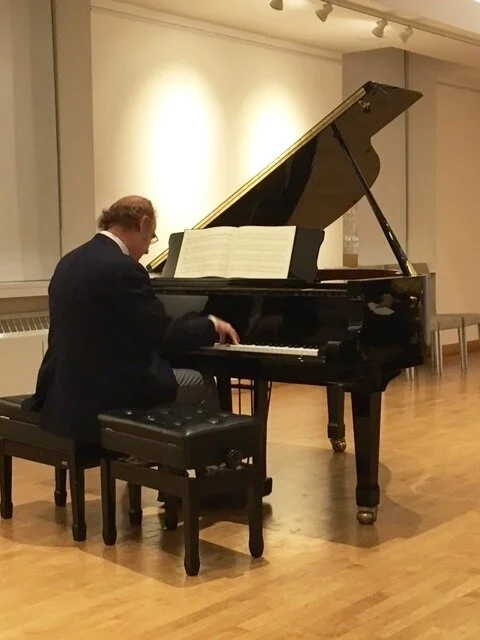From Antonín Dvořák to Rubin Goldmark and his Progeny
By Majda Kallab Whitaker
Who was Rubin Goldmark (1872-1936)? Answer: a star student of Czech composer Antonín Dvořák (1841-1904) at the National Conservatory of Music of America in the early 1890s, and nephew of the important late-19th century Hungarian-born Viennese composer Karl Goldmark. When the young Rubin Goldmark presented a work that pleased Dvořák, the great composer famously commented “Now there are two Goldmarks.” At the time Goldmark was already a teacher of piano and music theory at the National Conservatory in New York City. In a long career that included teaching at the Juilliard School of Music and private instruction, Goldmark was a leading light among musicians and famously taught other composers, among them Aaron Copland and George Gershwin, who are sometimes called “grand students” of Dvořák.
Moshe Knoll at piano. Photo: DAHA
Today we continue to learn of great- and great-great-grand students of Dvořák. Two have collaborated with the Dvořák American Heritage Association. Eric Ewazen, a Julliard faculty member whose works have been included in DAHA Spring Musicale programs, is a great-great-grand student of Dvořák, as the student of Milton Babitt, who studied with Philllip James, who studied with Rubin Goldmark. And composer, pianist, and DAHA Board Member Moshe Knoll recently discovered that one of his early teachers, Ozan Marsh, American pianist, pedagogue, arranger and composer at the University of Arizona, Tucson, studied directly under Goldmark, making Moshe the newest-minted great-grand student of Dvořák. Knoll recently premiered his Psalm 133 in concerts at the Merkin Concert Hall in New York and New Jersey Performing Arts Center in Newark. It’s a small world when it comes to Dvořák and American music composition!
Images:
1 - Rehearsal of Moshe’s Knoll’s “Psalm 133” for soprano, violin, and string orchestra. Photo credit: Laura Goldberg.
2- Moshe Knoll at piano. Photo: DAHA

